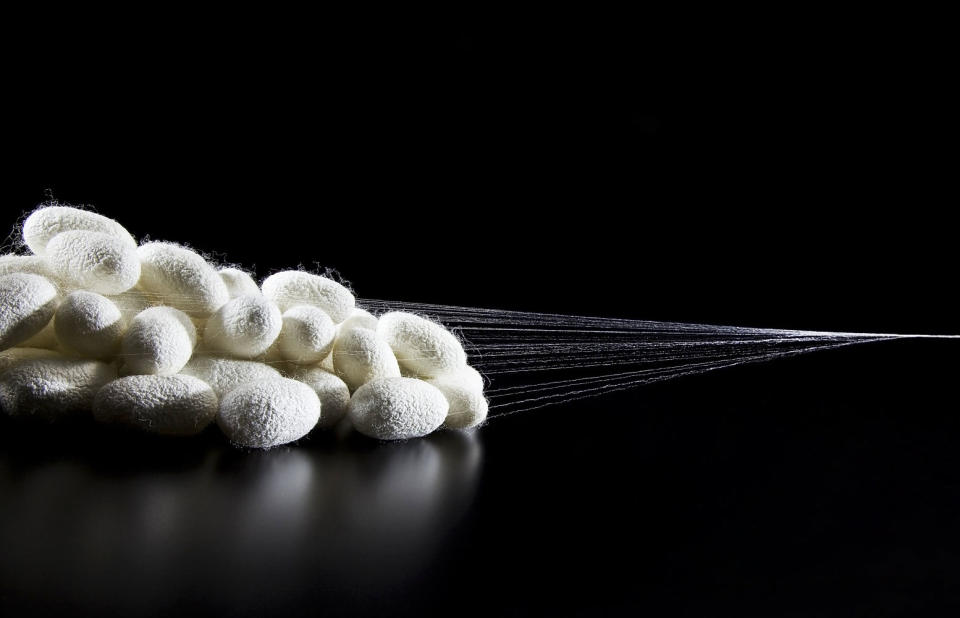Graphene-fed silkworms can spin super threads
It could lead to a new type of eco-friendly wearables and biodegradable implants.

Turns out graphene, the wonder material with so many potential applications, is also the secret sauce to making tougher silk. A team of scientists from Tsinghua University in Beijing successfully created silk that's twice as tough simply by feeding the material to silkworms. In order to do so, they coated leaves with a solution that contains either carbon nanotubes or graphene. Carbon nanotubes are essentially rolled up graphene, which is a single layer of tightly packed carbon atoms. The researchers opted for the feeding method, because it's much simpler and more environmentally friendly than treating the final product in chemicals.
Upon closer inspection, the team found that their "super silk" can conduct electricity and has a more ordered crystal structure than typical silk. The carbon materials weren't visible in cross sections of the silk threads, probably because they only made up 0.2 percent of the aqueous solution's weight. Still, the final product can withstand 50 percent more stress than usual before breaking. The scientists still don't know how much of the the carbon materials made it to final product and how much ended up excreted or metabolized, though. That's something they'll have to figure out when they conduct further studies.
This experiment proves, though, that it's possible to make super silk in big batches by feeding worms graphene. The team believes that in the future, the tougher silk could be used to make biodegradable medical implants and even eco-friendly wearable electronics.
